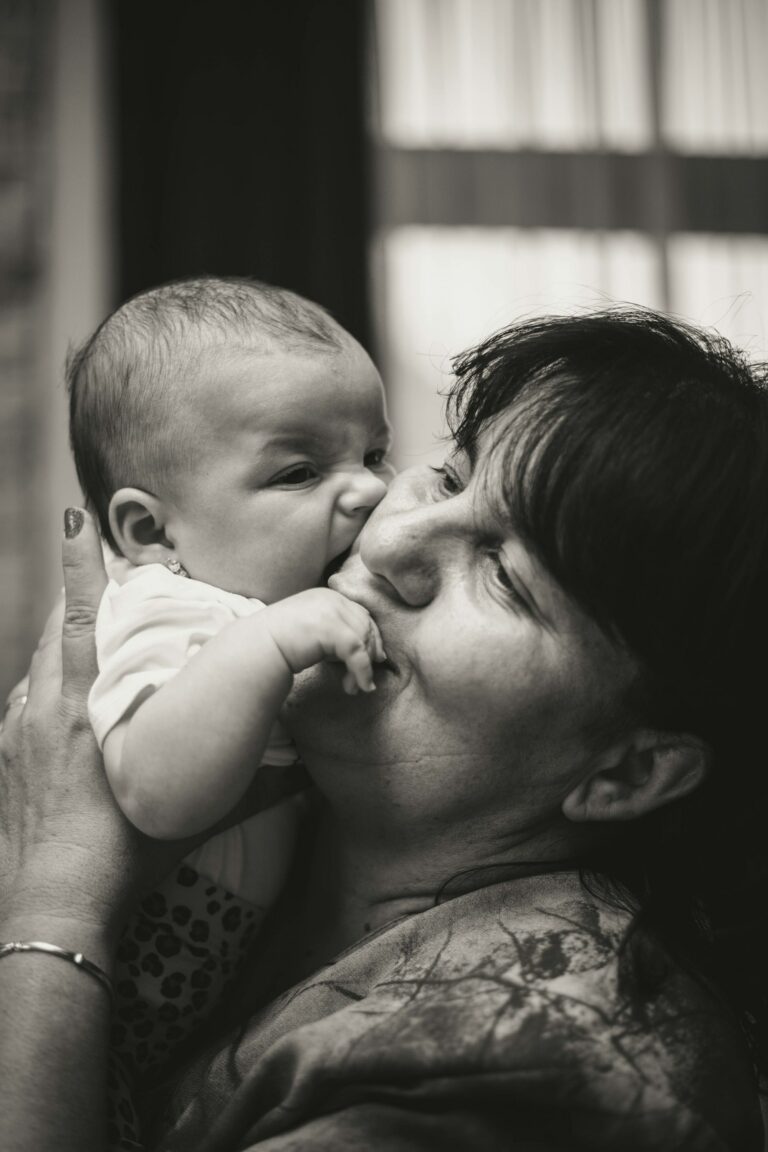Faced with the swirl of bedtime routines, unexpected cries, and the deeply human need for warmth as night settles, parents often find themselves searching for tools that actually work—tools anchored in both love and science. The lullaby, deceptively simple yet remarkably potent, has comforted generations, carried whispered reassurances across centuries, and quietly shaped the sleep (and sanity) of countless families. But what exactly gives a lullaby its enchanting, sleep-bringing power? What do medical studies reveal about its effect on a baby’s developing brain, heart, and sense of safety? You may sometimes question whether the ritual of singing to your baby matters—especially when exhaustion lingers or when voices falter. Let’s explore, with complete empathy for the fatigue and hope that mark parenthood, the science, traditions, and unique ways lullabies can transform bedtime into something nourishing for both child and parent.
The Essence of the Lullaby: Roots, Ritual, and Meaning
A lullaby, at its core, is more than music—it is an intentional act of comfort, combining melody, gentle rhythm, and emotional presence. Linguistically, the word stitches together “lull” (to soothe or calm) and “by” (beside), expressing an intimacy that remains timeless across languages and cultures. Parents across the globe, from snowy northern villages humming folk tunes to bustling cities improvising modern verses, have always known the value of a gentle song at dusk.
But why does a lullaby work—what lies beneath this universal ritual? Research shows that the slowed tempo, simple musical structure, and repetitive words allow the infant’s autonomic nervous system to downshift: heart rate slows, respiratory rhythm stabilizes, and stress hormone (cortisol) levels decrease. For premature babies in neonatal units, exposure to live singing supports increased oxygen saturation and shorter hospital stays—a finding highlighted in multiple pediatric journals. And for every baby, the familiar intonation of a parent’s voice triggers recognition built from months of hearing those sounds in the womb—a bond that research in developmental psychology terms attachment.
Never underestimate the role of the physical act: the gentle swaying, eye contact, or tender touch accompanying a lullaby amplifies these effects. For parents, too, singing provides a moment of calm—an intentional pause where love and reassurance override fatigue or anxiety.
Lullabies Around the World: Tradition, Science, and Emotion
Every culture owns its signature lullabies: the Brazilian “Dorme neném,” Welsh “Suo Gân,” Japanese “Komoriuta,” or Irish Gaelic cradle songs. The differences in melody, language, and imagery are striking—yet deep under the surface, the essentials remain the same: simplicity, repetition, and a deliberate softness.
Some lullabies play with nonsense syllables, others invoke stars and dreams, while a few, surprisingly, carry undercurrents of fear, loss, or hope for better tomorrows. Psychologists see these emotional undertones as both cathartic for the caregiver and connective for the child—mirroring the complexity of parenthood itself. Anthropological research also points to the role of lullabies in passing on family beliefs, local stories, and even protective symbolism—like invoking spirits, nature, or ancestral blessings to guard a sleeping baby from harm.
In every instance, a lullaby becomes a living thread between generations, weaving emotional resilience and a sense of belonging into the tapestry of early childhood.
The Anatomy of a Soothing Lullaby: What Makes It Work?
A question that puzzles many parents: “Can any song become a lullaby?” What distinguishes a calming song from one that might stimulate or even unnerve a baby?
Let’s break down the typical features:
- Melodic Simplicity: Melodies usually hover in a higher vocal range, with limited leaps—a design that soothes but doesn’t challenge the ear.
- Rhythmic Regularity: Most lullabies use a triple meter or 6/8 time signature, echoing the lulling motion of rocking or swaying.
- Repetition: Both in music and words—this supports language acquisition, memory formation, and neurological relaxation.
- Minimal Accompaniment: Babies show a marked preference for the human voice over instruments. The voice carries emotional context, micro-vibrations, and warmth that recordings simply cannot match, as confirmed by EEG and imaging studies.
Of note, not all music is suitable for bedtime. Songs with a quick tempo, complex arrangements, or intense dynamics may inadvertently accelerate a child’s heartbeat or excite the nervous system—counterproductive at bedtime. Pediatricians and therapists agree: stick to slow, gentle, and emotionally positive tunes.
Proven Benefits: The Medical and Emotional Impact of Lullabies
Parents are right to seek evidence—what does modern science reveal about the real effects of regular lullabies?
For Babies:
- Physiological Regulation: Studies confirm live lullabies help synchronize heart rate, breathing, and oxygenation, promoting deep sleep cycles essential for brain growth.
- Neurological Development: Exposure to melodic patterns activates regions in the temporal and prefrontal cortices. This stimulation, especially combined with touch or eye contact, accelerates language skills, strengthens emotional processing, and enhances memory.
- Emotional Resilience: Attachment theory highlights how a familiar, soothing lullaby anchors a baby’s sense of security—the very foundation of future stress management and social connection.
For Parents:
- Reduced Stress: Engaging in a familiar lullaby routine can lower parental anxiety and support transitions at bedtime, fostering a therapeutic moment for the family.
- Bonding and Sensitivity: The act of singing—and adapting songs to respond to a child’s mood—builds mutual awareness and increases parental confidence.
Notably, in neonatal intensive care units, music therapy protocols using live lullabies show benefits ranging from improved feeding to shorter hospital stays—a testament to the biological and emotional reach of this ancient ritual.
Creating and Personalizing Your Family’s Lullaby Ritual
Here’s where scientific insight meets lived experience. The most effective lullaby isn’t necessarily a classic, nor does it require a flawless singing voice. What counts is authenticity and presence.
Feel free to:
- Invent verses on the spot—using your child’s name, favorite toy, or snippets from your day.
- Adapt melodies from your childhood or cultural background.
- Alternate between soft hums, spoken words, or even rhythmic shushing (proven to mimic intrauterine sounds that soothe infants).
- Encourage participation from all caregivers, including siblings or grandparents. Diverse voices enrich the emotional and cultural landscape of your family.
A lullaby, when woven consistently into the bedtime routine, cues your baby’s circadian rhythm and provides a time-bound signal: “It’s time to rest. You are safe.”
Technology, Recorded Music, and Modern Bedtime Tools: Where Do They Fit In?
Musical toys, white noise apps, and programmable mobiles now line the shelves of baby stores, promising easier sleep. While these tools can extend your options and offer temporary relief (especially for solo evenings or travel), every pediatric society points to one fundamental truth: Nothing replaces the emotional resonance of the parent’s voice. It’s the interaction, the anticipation, the mannerisms, and the lived warmth that nurture both sleep and development.
Is it wrong to use technology? Not at all. Just remember to let it complement, not replace, your own presence. Avoid overly stimulating content—stick with features that echo the qualities of a genuine lullaby: gentle melody, regular rhythm, and comforting tone.
Lullabies Across Generations: Family, Memory, and Social Connection
Long after infancy, the echoes of a nightly lullaby linger—in memory, identity, and sometimes even family tradition. Songs first sung in the cradle resurface at moments of comfort, transition, or celebration. Literature, film, and even contemporary pop culture weave lullabies into narratives of loss, longing, and hope—think of scenes in Disney films or whispered lyrics in classic ballads.
These cultural imprints remind us that lullabies are not a trivial luxury. They are an ancient practice, affirmed by research and lived experience, which unite emotion and biology, parent and child, present and past. Whether whispered, sung, or gently hummed, a lullaby offers a space—however brief—where both generations breathe a little easier.
Key Takeaways
- A lullaby is not just a bedtime song; it is a medically supported tool that soothes, connects, and strengthens babies physiologically and emotionally.
- Simplicity in melody and lyrics—plus the unique sound of the parent’s voice—are what make a lullaby effective.
- Every culture celebrates lullabies in its own way, but the underlying benefits to development, attachment, and emotional health are universal and supported by decades of research.
- Personalizing lullabies with your family’s words, stories, or traditions deepens their soothing power and fosters resilience and language growth.
- Technology and recordings can support the bedtime routine, but the live interaction between parent and baby remains central.
- Should any sleep or behavioral concern persist, or if further guidance is sought, pediatric professionals are valuable resources—there’s always tailored support available.
- For ongoing advice, personalized health questionnaires, and expert-backed resources designed for your child, consider downloading the Heloa app. This offers families practical support and peace of mind—from bedtime and beyond.
Questions Parents Ask
Can lullabies help children beyond infancy, such as toddlers or older kids?
Absolutely. While lullabies are mostly associated with calming babies, their benefits can extend well past the first years of life. Many children—toddlers and even older kids—find comfort in familiar bedtime songs. These soothing moments can provide reassurance during times of change, ease transitions like starting school, or help children manage nighttime fears. Even if your child is no longer a baby, sharing a quiet, melodic routine together can remain a source of connection and security.
Do you have to be a good singer for lullabies to work?
Not at all, and this is a question many parents wonder about. What truly matters is the warmth and presence you bring. Children are especially receptive to the voices of those they trust. Your sincerity and the intimacy of your own voice far outweigh any technical singing ability. The unique sounds, pauses, and tone in your style are what truly comfort your child—so feel free to hum or quietly talk through the melody if that feels more natural. The most important thing is that your child feels loved and safe while hearing you.
Can lullabies be used to help soothe children during the day, too?
Yes, lullabies aren’t limited to bedtime. Gentle songs or hummed melodies can also help children relax during other moments—such as when they’re upset, unwell, or in need of comfort. Familiar tunes can offer support during car rides, after a difficult day, or when emotions run high. These calming routines can help anchor a child, turning everyday moments into opportunities for connection and reassurance.










